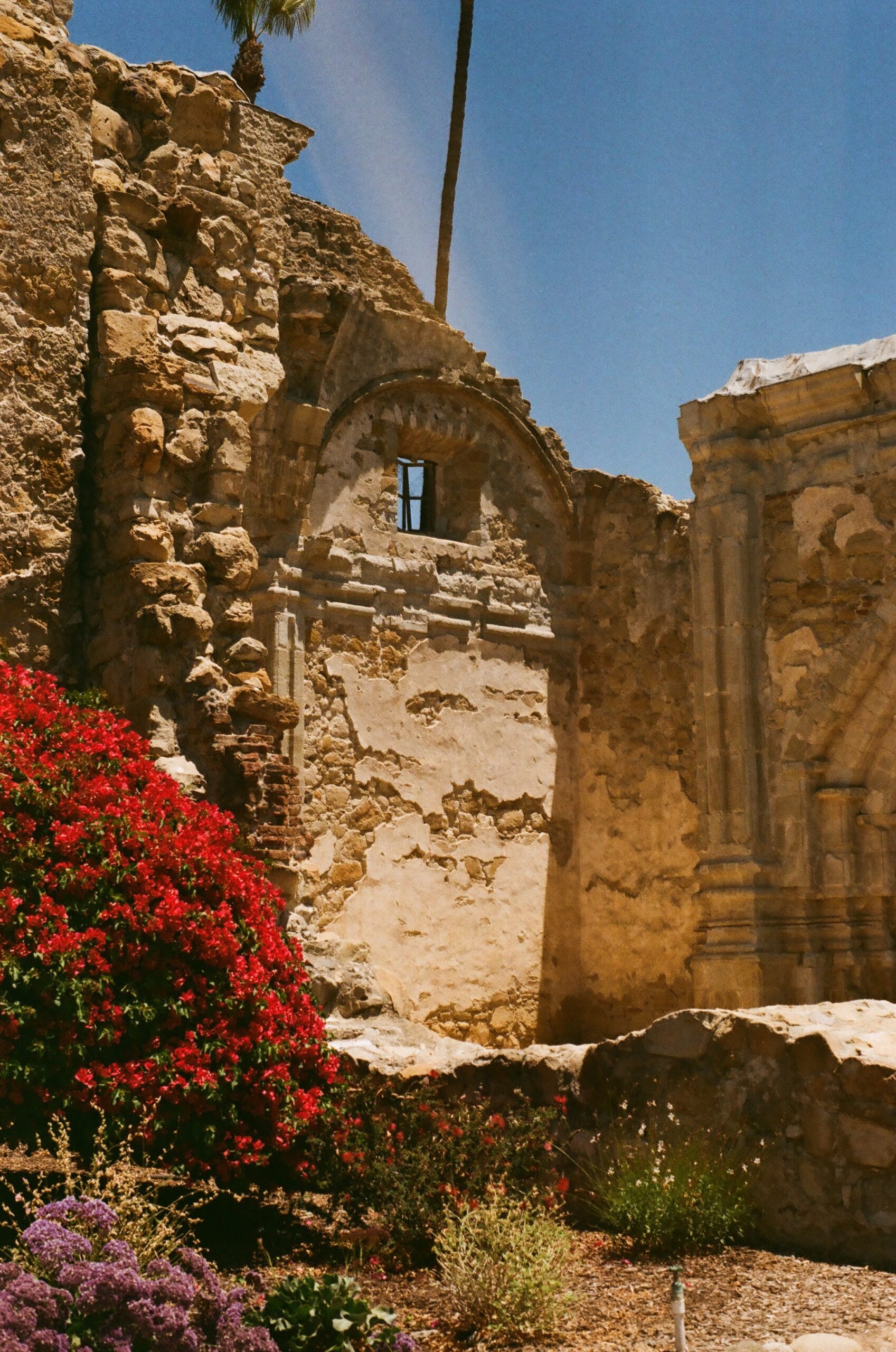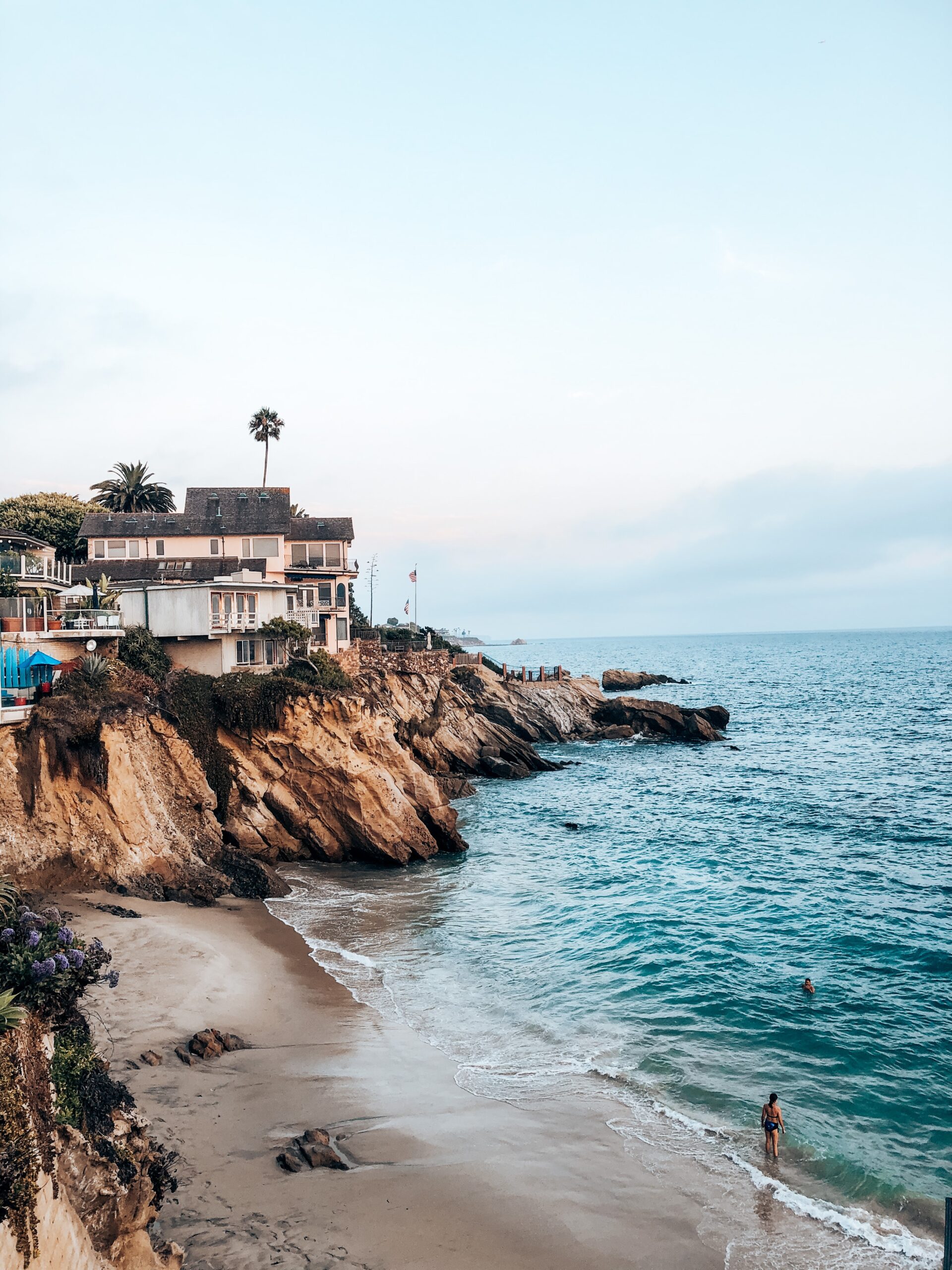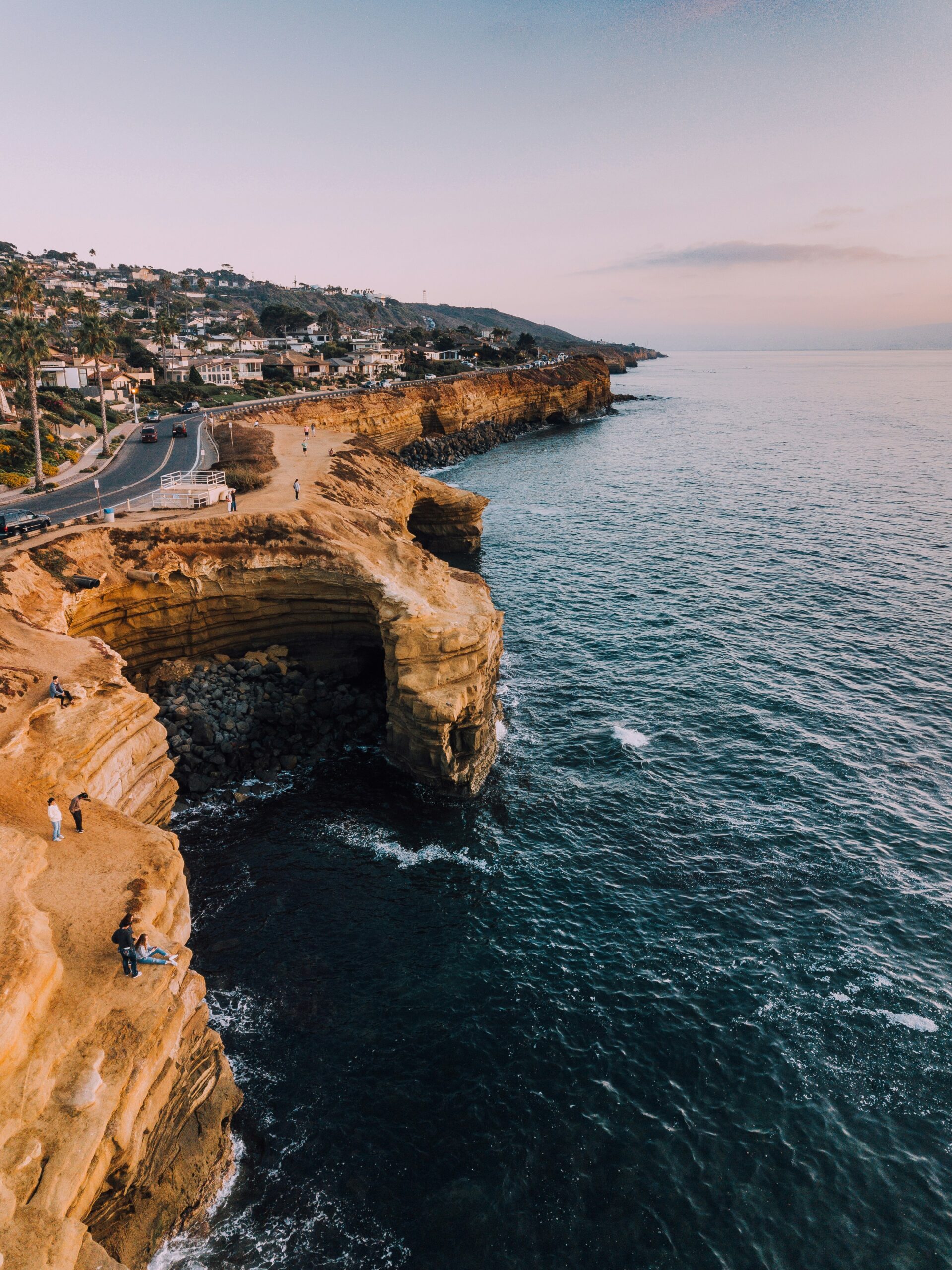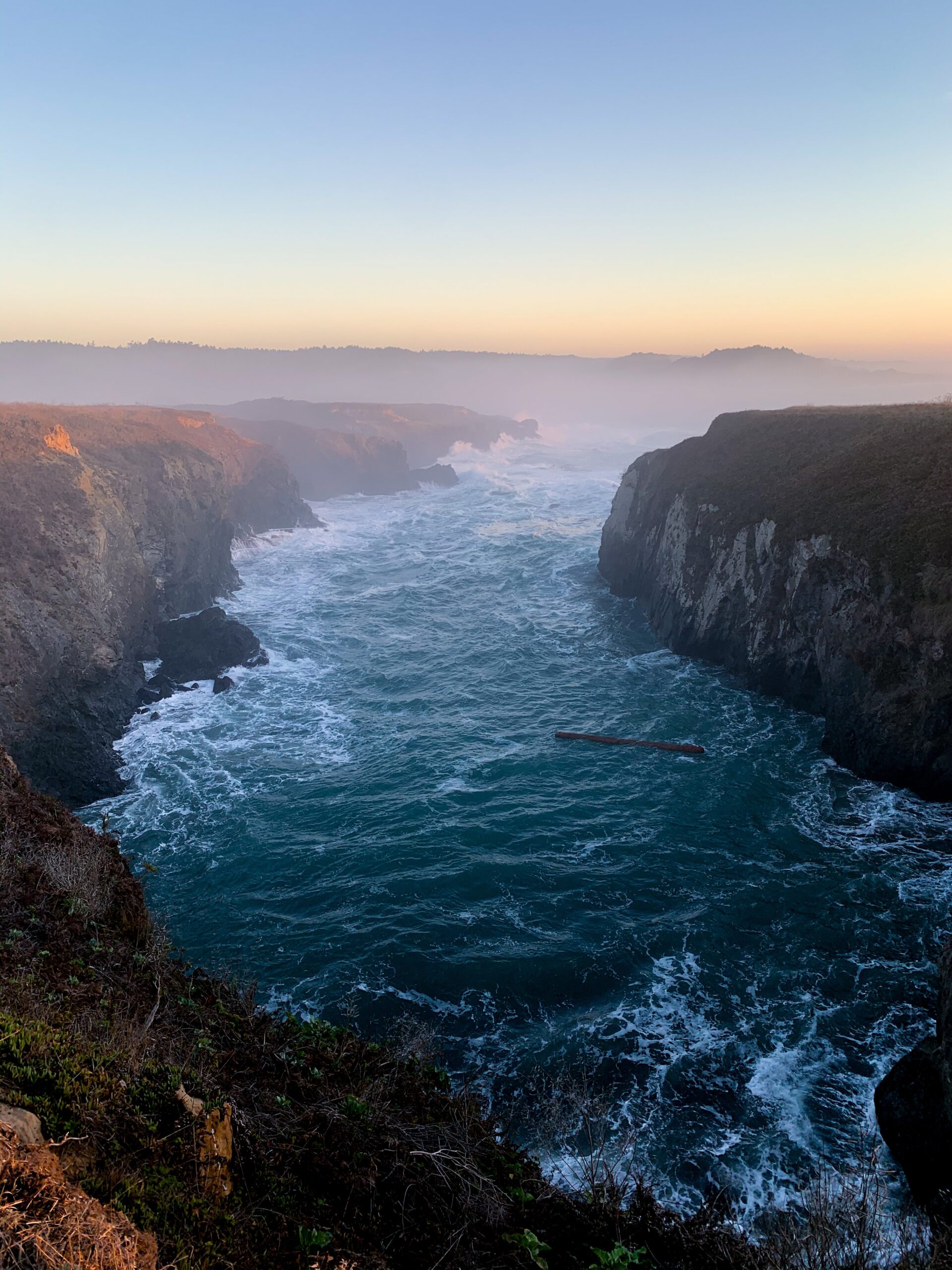El Camino Real: A Historic Road in California
If you're interested in California history, you've likely heard of El Camino Real. This historic route stretches over 600 miles, connecting the 21 Spanish missions in California, along with a number of sub-missions, four presidios, and three pueblos. The literal translation of “El Camino Real” is “The Royal Road,” and it was designated as such because it was the route taken by Spanish royalty when they visited California.
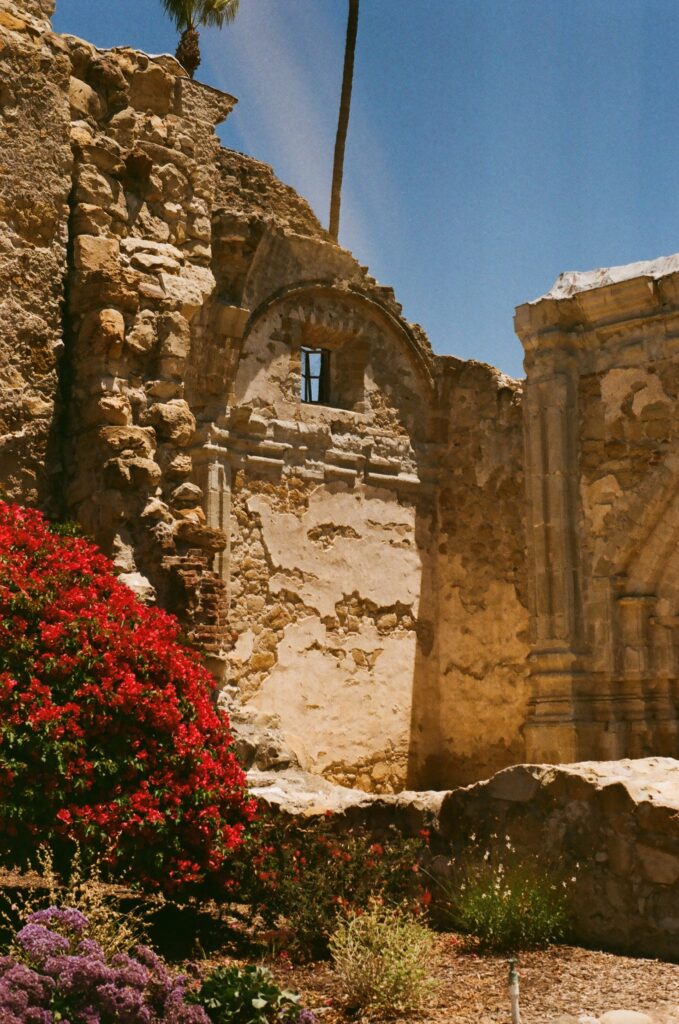
The history of El Camino Real dates back to the late 1700s, when Spanish missionaries began to establish settlements throughout California. The route was created to link the missions and the Baja California mission trail, and it quickly became an important transportation and trade route. Today, El Camino Real is a popular tourist destination, with many visitors traveling the historic route to see the missions and learn about California's rich history. Whether you're a history buff or simply interested in exploring California's past, El Camino Real is a must-see destination.
El Camino Real: A Historic Road in California
Historical Background
If you are interested in learning about the history of El Camino Real, you will be fascinated by the Spanish exploration of California. The Spanish began exploring the area in the late 16th century, and by the early 17th century, they had established a permanent presence in the region. The Spanish were attracted to California because of its natural resources, including gold, silver, and other valuable minerals.
Spanish Exploration
The Spanish began exploring California in the late 16th century, but it was not until the early 17th century that they established a permanent presence in the region. The Spanish were attracted to California because of its natural resources, including gold, silver, and other valuable minerals. They also saw it as an opportunity to spread Christianity to the Native American population.
The Missions of California
The Spanish established 21 missions in California between 1769 and 1823. These missions were established along El Camino Real, which was the main road connecting the missions. The missions were designed to convert the Native American population to Christianity and to teach them Spanish culture and customs. The missions were also used as a way to establish Spanish control over the region.
Juan Bautista de Anza was a Spanish explorer who played a key role in the establishment of the missions. He led a group of settlers from Mexico to California in 1775, and he established the first non-mission settlement in the region. His expedition opened up a new route to California, which became known as the Anza Trail.
In conclusion, the history of El Camino Real is closely tied to the history of California. The Spanish exploration of the region, the establishment of the missions, and the role of Juan Bautista de Anza all played a key role in the development of the region.
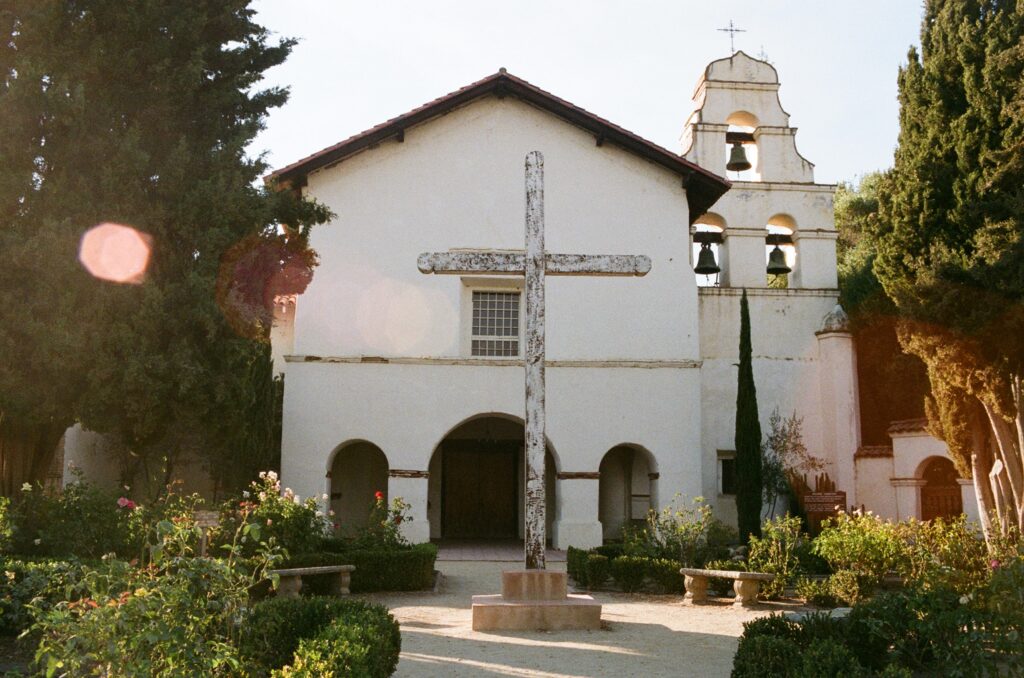
Geographic Span
El Camino Real stretches from San Diego to Sonoma, covering a distance of approximately 600 miles. The trail connects the 21 Spanish missions in California, sub-missions, four presidios, and three pueblos. It runs along the coast, roughly tracing Highway 101, and is also known as The Royal Road.
From San Diego to Sonoma
The trail starts in San Diego, a city known for its sandy beaches and warm climate. As you follow El Camino Real north, you will pass through Los Angeles, a bustling metropolis with iconic landmarks such as the Hollywood Sign and the Walk of Fame. Further up the coast, you will reach Santa Barbara, a picturesque city with Spanish colonial architecture and a vibrant arts scene.
Continuing north, you will pass through the Central Coast, an area known for its vineyards and wineries. The trail then leads to San Francisco, a city famous for its Golden Gate Bridge, cable cars, and diverse culture. Finally, the trail ends in Sonoma, a town located in the heart of California's wine country.
Extensions to the Trail
El Camino Real also includes extensions to the trail in other regions. In Texas, El Camino Real de los Tejas is a historic trail that stretches from San Antonio to Natchitoches, Louisiana. It was used by Spanish explorers and missionaries in the 18th century to establish missions and trade with Native Americans.
In New Mexico, El Camino Real de Tierra Adentro was a trade route that connected Mexico City to Santa Fe. It was used by Spanish colonizers to transport goods and establish settlements in the region.
Overall, El Camino Real is a historic trail that offers a glimpse into California's past and the legacy of Spanish colonization. Whether you are a history buff or an outdoor enthusiast, exploring the trail is an adventure worth taking.
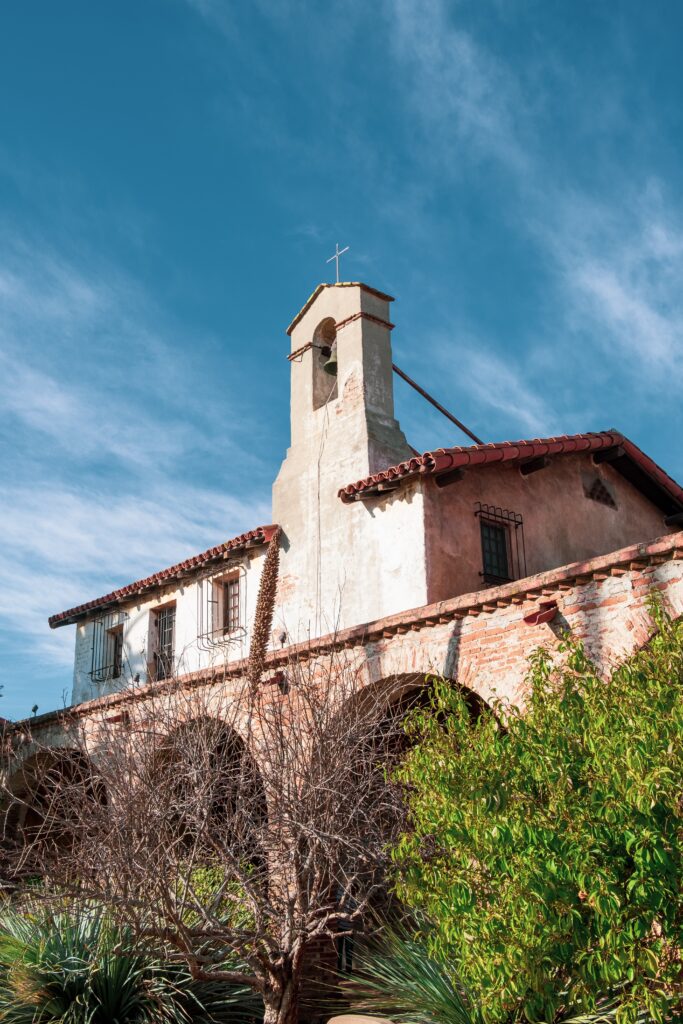
Cultural Significance
El Camino Real, also known as the Royal Road, has played a significant role in California's history and culture. The road was established in 1683 by Spanish missionaries to connect the 21 Franciscan missions throughout California. Today, it is recognized as a National Historic Trail and a California Historical Landmark #784.
Traditions and Celebrations
The bells of El Camino Real have become a symbol of California's heritage and are often seen in various celebrations and festivals throughout the state. The ringing of the bells is believed to bring good luck and prosperity. The mission bells have also been used in the Mission Revival Movement, which aimed to preserve the state's Spanish heritage and architecture.
Preservation Efforts
In recent years, efforts have been made to preserve and restore El Camino Real. The California Mission Trail Association has been working to preserve the historic route and its landmarks. The association has also been working to create a statewide network of trails that will allow people to walk or bike along the historic route.
Related Posts:
Modern-Day Relevance
El Camino Real may have been established over 250 years ago, but it still holds significant relevance in modern-day California. Here are some ways in which El Camino Real is still relevant today:
Tourism and Education
El Camino Real is not just a historic trail, but also a popular tourist destination. Many people come to California to explore the trail and learn about its rich history. Self-guided tours are a popular way to explore El Camino Real, and there are many resources available to help you plan your trip. You can find maps, guides, and other information online or at local visitor centers.
In addition to tourism, El Camino Real has also become an important educational resource. Many schools and universities offer courses and programs that focus on the history and culture of California, and El Camino Real is often a key component of these programs.
Transportation Corridor
El Camino Real was originally established as a transportation corridor, and it continues to serve that purpose today. While the trail itself is no longer used as a major transportation route, the modern-day U.S. Route 101 and California State Route 82 follow the same general path as El Camino Real. These highways are important transportation corridors that connect major cities and towns in California.
In addition to highways, El Camino Real also has a significant impact on local transportation. Many cities and towns along the trail have designated El Camino Real as a historic district, which has helped to preserve the trail's unique character and architecture. Some cities have also implemented special transportation programs, such as bike lanes and pedestrian paths, to encourage people to explore the trail on foot or by bike.
Overall, El Camino Real is a valuable part of California's history and culture, and it continues to play an important role in modern-day California. Whether you're a history buff, a tourist, or a local resident, there are many ways to explore and appreciate this historic trail.
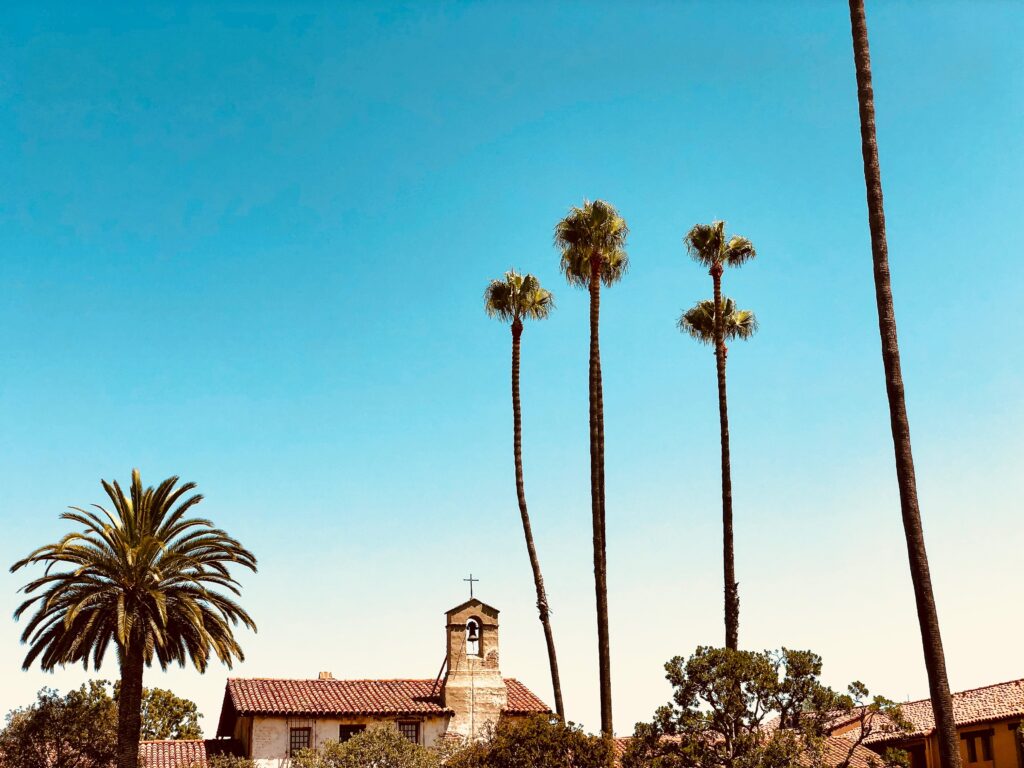
Economic Impact
El Camino Real played a significant role in the economic development of various regions. The trade and commerce that took place along the route helped spur economic growth and development. Furthermore, the development of real estate along the route led to the establishment of new towns and cities.
Trade and Commerce
The exchange of goods and services along El Camino Real facilitated the economic growth of California and New Spain. The route connected Zacatecas, Mexico, to Santa Fe, New Mexico, and eventually to California. This facilitated the exchange of goods such as textiles, spices, and precious metals. The trade along the route helped to establish new markets, which in turn led to the growth of local economies.
Real Estate and Development
The development of real estate along El Camino Real led to the establishment of new towns and cities. The route provided a means of transportation that allowed settlers to establish communities in previously uninhabitable areas. The establishment of new towns and cities led to the growth of real estate markets, which in turn led to the development of new industries such as agriculture and manufacturing.
In conclusion, El Camino Real played a significant role in the economic development of various regions. The trade and commerce that took place along the route helped spur economic growth and development, while the development of real estate along the route led to the establishment of new towns and cities.
Influence on Settlement Patterns
El Camino Real de los Tejas played a crucial role in shaping the settlement patterns of Texas and Louisiana. The trail facilitated the movement of people and goods, leading to the establishment of new communities and the growth of existing ones. In this section, we will explore how El Camino Real influenced settlement patterns in the region.
Mission Communities
El Camino Real played a significant role in the establishment of mission communities in Texas. Spanish missionaries traveled along the trail to reach the local tribes and establish missions. These missions served as centers of religious and social activity and were often the first settlements in the region. The missionaries relied on the trail to transport supplies and communicate with other settlements. As a result, El Camino Real played a crucial role in the growth of mission communities.
Urban Growth
El Camino Real also played a significant role in the growth of urban areas in Texas and Louisiana. The trail facilitated the movement of people and goods, leading to the establishment of new towns and cities. The presidios, settlements, and soldiers along the trail provided protection and stability, making it easier for colonists to establish permanent settlements. As a result, El Camino Real played a crucial role in the growth of urban areas in the region.
Overall, El Camino Real de los Tejas played a vital role in shaping the settlement patterns of Texas and Louisiana. The trail facilitated the movement of people and goods, leading to the establishment of new communities and the growth of existing ones. The missionaries, colonists, soldiers, and other settlers along the trail relied on it to transport supplies and communicate with other settlements. As a result, El Camino Real played a crucial role in the growth and development of the region.
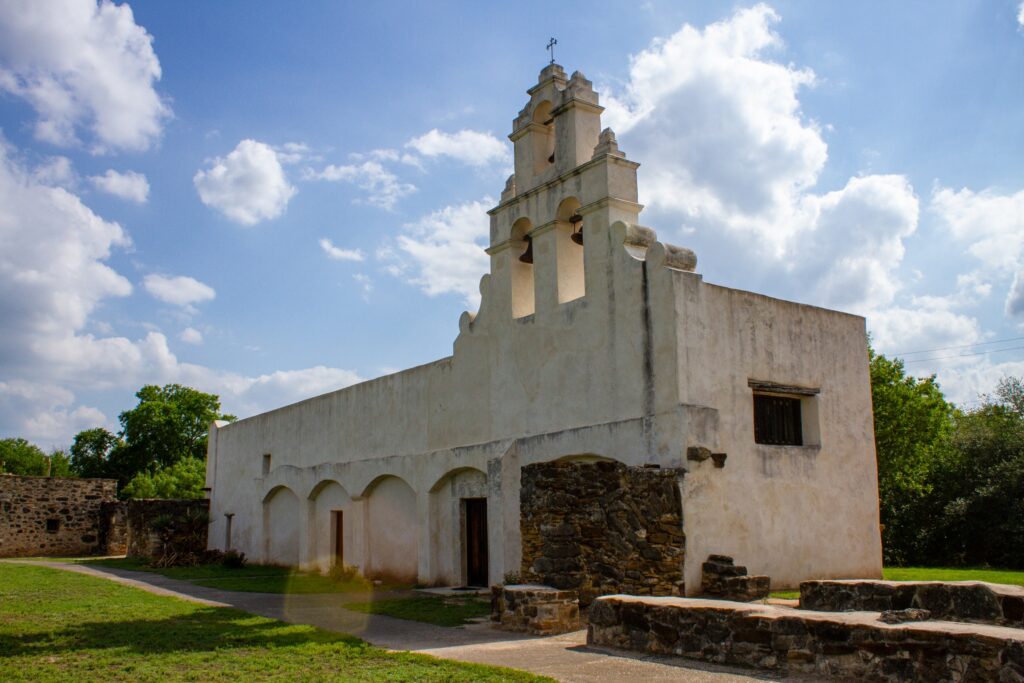
Religious and Social Aspects
Religion played a significant role in the development of El Camino Real. The Spanish missions established along the road served as a means of spreading Christianity to the indigenous people of California. The missions were established by Franciscan friars, led by Junipero Serra. The friars aimed to convert the Native Americans to Christianity and also to teach them Spanish culture and traditions.
The Role of the Missions
The Spanish missions were not just religious institutions but also served as centers of learning and agriculture. The missions were responsible for the development of the agricultural industry in California, introducing new crops such as wheat, grapes, and olives. The missions also played a vital role in the development of the Spanish language in California.
The missions were also responsible for the construction of many of the iconic buildings and structures along El Camino Real. The Serra Chapel, located in San Juan Capistrano, is a prime example of the architectural style of the missions. The chapel is a beautiful example of Spanish colonial architecture, with its white stucco walls and red-tiled roof.
Indigenous Influence
The indigenous people of California played a significant role in the development of El Camino Real. The Spanish missionaries recognized the importance of the indigenous people and their culture and traditions. The friars worked closely with the indigenous people, teaching them new skills and trades, such as carpentry and blacksmithing.
The indigenous people also played a vital role in the construction of the missions and other structures along El Camino Real. They provided the labor and expertise necessary for the construction of the buildings and structures. The indigenous people also helped to maintain the missions and the surrounding areas.
In conclusion, El Camino Real played a significant role in the religious and social development of California. The Spanish missions served as centers of learning, agriculture, and religion. The indigenous people of California played a vital role in the development of El Camino Real, contributing their labor and expertise to the construction and maintenance of the missions and other structures along the road.
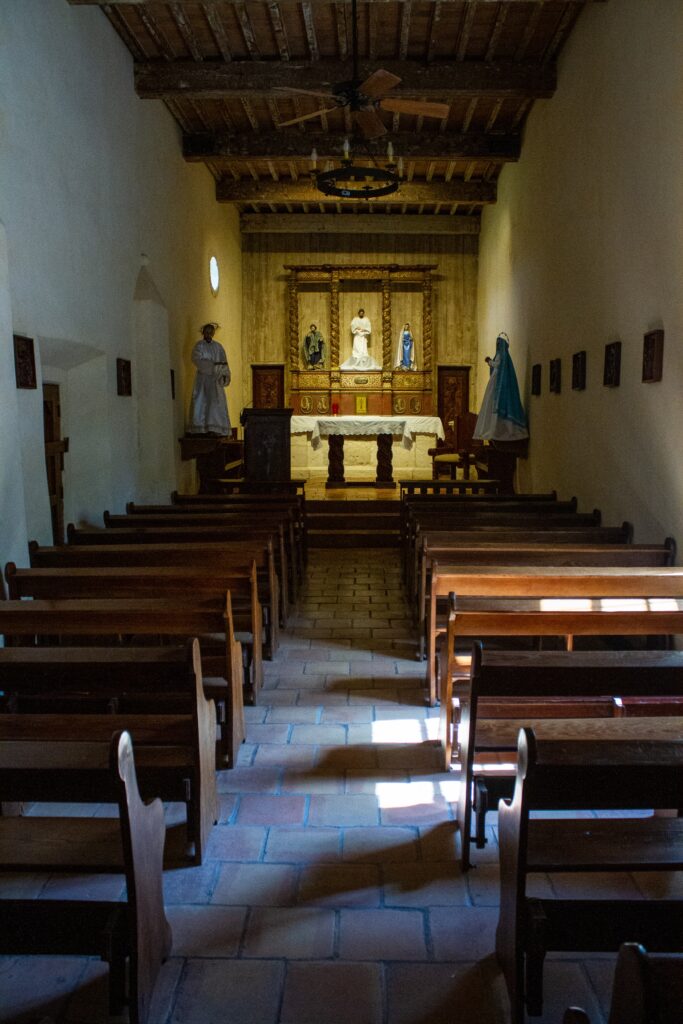
Conservation and Restoration
El Camino Real is a historic route that stretches from San Diego to San Francisco and is dotted with 21 missions. Over the years, the route has undergone several changes, and the historic sites along the way have faced numerous challenges. However, there have been several efforts to conserve and restore El Camino Real and its missions.
Historic Sites
Many of the historic sites along El Camino Real have been restored to their former glory. One such site is the San Luis Rey de Francia, which was severely damaged by an earthquake in 1812. The site was restored in the 1930s, and today, it is a popular tourist destination.
Another mission that has undergone restoration is the San Juan Capistrano. The mission was damaged by an earthquake in 1812 and again in 1865. However, it was restored in the early 20th century, and today, it is a popular tourist attraction.
Mission Architecture
The missions along El Camino Real are known for their unique architecture, which is a blend of Spanish and Native American styles. The mission revival movement in the late 19th century was instrumental in preserving and restoring the missions.
One of the most iconic missions along El Camino Real is the San Gabriel Arcangel. The mission was founded in 1771 and has undergone several renovations over the years. Today, it is a National Historic Landmark and a popular tourist attraction.
Another mission that showcases the unique architecture of El Camino Real is the Santa Ines. The mission was founded in 1804 and has undergone several renovations over the years. It is known for its distinctive bell tower and is a popular destination for tourists.
Overall, the conservation and restoration efforts along El Camino Real have been successful in preserving the historic sites and mission architecture. The adobe buildings have been restored, and the missions have been preserved for future generations to enjoy.
Media and Representation
In Literature and Film
El Camino Real has been featured in various forms of media, including literature and film. For instance, the novel “The Old Man and the Sea” by Ernest Hemingway mentions El Camino Real in passing, highlighting its significance as a historic route in California. Similarly, the film “Vertigo” by Alfred Hitchcock features a scene where the main character drives along El Camino Real, showcasing the road's scenic beauty and importance to the state's history.
Digital Presence
El Camino Real also has a strong digital presence, with various websites and mobile apps dedicated to providing information about the road and its history. For example, the website LaasSubject.org has an article on the invention of El Camino Real and its significance as a historic route in California. Additionally, the digital preservation of El Camino Real de California has been undertaken using LiDAR technology, which allows for the creation of detailed 3D maps of the road and its surroundings.
Moreover, events such as the El Camino Real International Heritage Center's annual conference and the California Missions Foundation's El Camino Real Bell Ringing Ceremony serve as ways to celebrate and promote the road's cultural and historical significance. Social media platforms such as Facebook and Twitter also provide a means for individuals and organizations to share information about El Camino Real and its role in California's history.
Overall, El Camino Real's representation in various forms of media and its digital presence serve as testaments to the road's enduring significance and cultural importance.
Frequently Asked Questions
What historical significance does El Camino Real hold?
El Camino Real, also known as the Royal Road, was a significant trade route that connected Mexico City to Santa Fe. It was first established in the late 16th century and played a crucial role in Spanish colonial expansion. The trail was used for transporting goods, including gold, silver, and other valuable items. It also served as a route for missionaries and explorers who were spreading Christianity and exploring new territories. Today, El Camino Real is recognized as a National Historic Trail.
Can you still travel on the original El Camino Real route?
While the original El Camino Real route no longer exists in its entirety, there are still sections of the trail that are accessible to the public. In Texas, the state has designated Highway 21 as the El Camino Real de los Tejas National Historic Trail. This route follows the original trail as closely as possible and provides visitors with a unique opportunity to experience the history and culture of the area.
What are some interesting facts about El Camino Real's history?
El Camino Real was used for over 300 years and played a significant role in the development of the American Southwest. It was also used as a route for exploration and trade, connecting various settlements and cultures. Some notable landmarks along the trail include the Alamo, San Antonio Missions, and the Presidio of San Francisco.
How does El Camino Real relate to modern highways in Texas?
Today, El Camino Real is recognized as a National Historic Trail and is commemorated by the state of Texas. The state has designated Highway 21 as the El Camino Real de los Tejas National Historic Trail, which follows the original trail as closely as possible. The trail is marked by signs and historical markers, providing visitors with a unique opportunity to experience the history and culture of the area.
What role did El Camino Real play in Spanish colonial expansion?
El Camino Real played a crucial role in Spanish colonial expansion, connecting Mexico City to Santa Fe. The trail was used for transporting goods, including gold, silver, and other valuable items. It also served as a route for missionaries and explorers who were spreading Christianity and exploring new territories. The trail helped to establish Spanish settlements and played a significant role in the development of the American Southwest.
Are there any notable landmarks along El Camino Real to visit?
There are several notable landmarks along El Camino Real that visitors can explore. Some of the most popular landmarks include the Alamo in San Antonio, the San Antonio Missions, and the Presidio of San Francisco. These landmarks offer a unique glimpse into the history and culture of the area and are a must-see for anyone interested in the history of El Camino Real.

